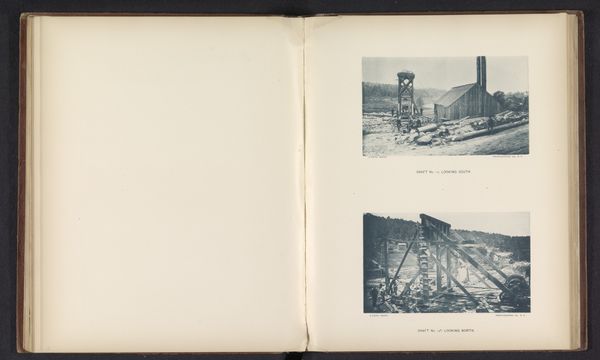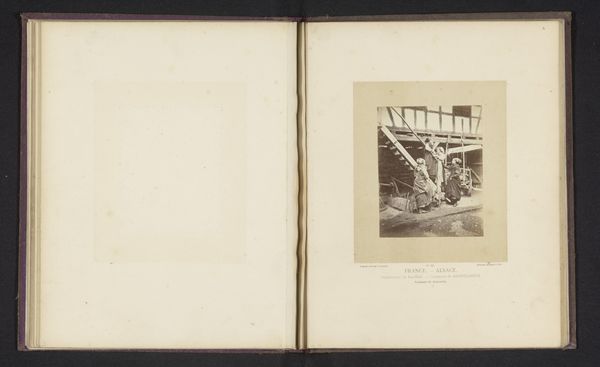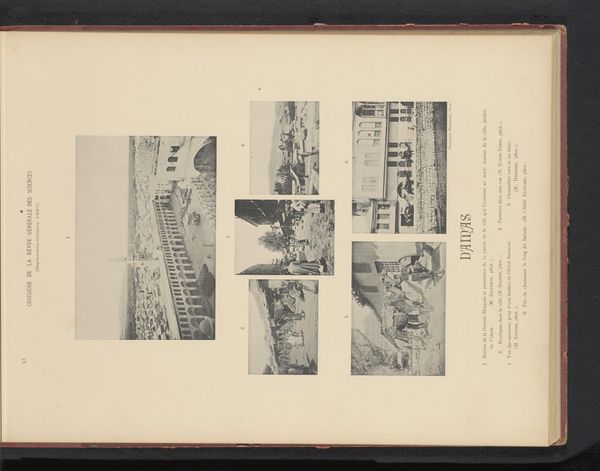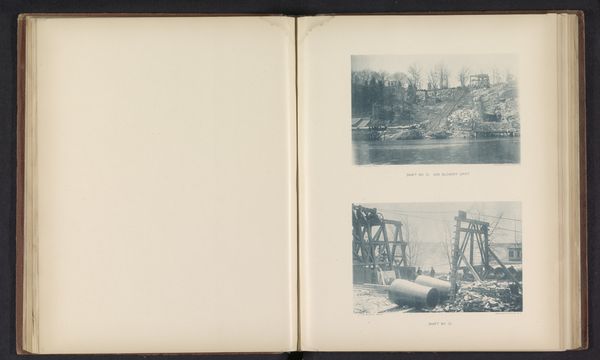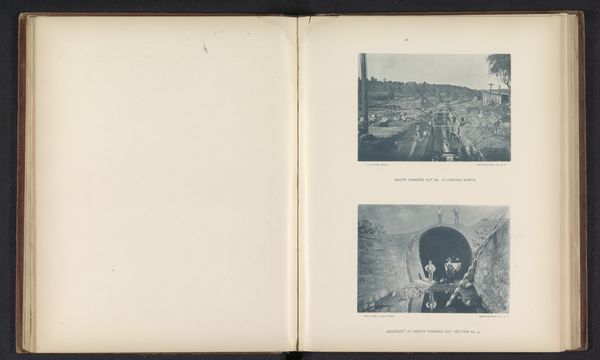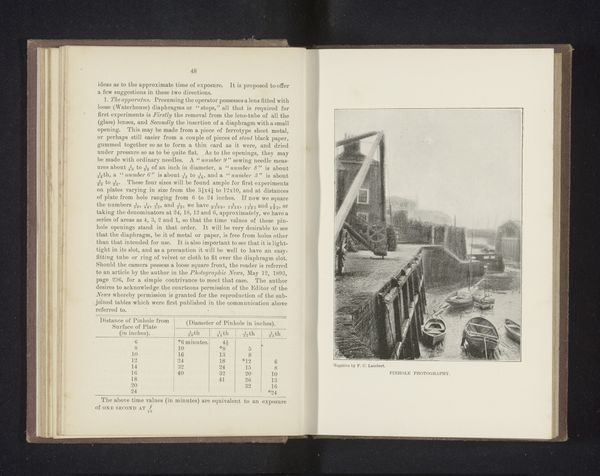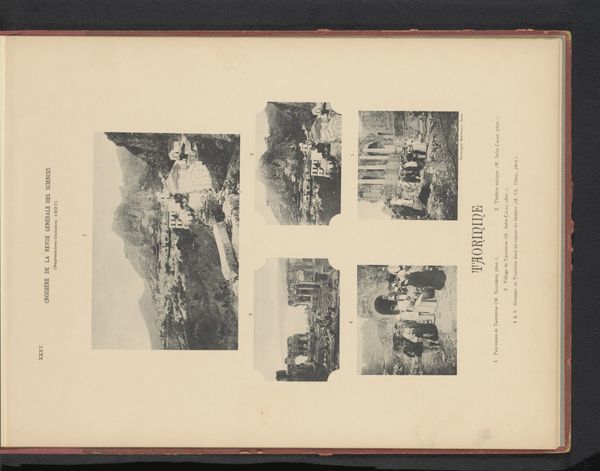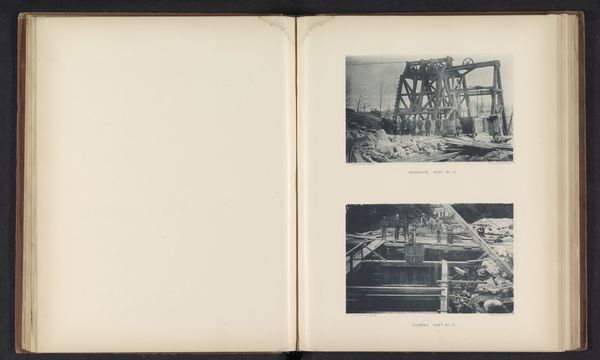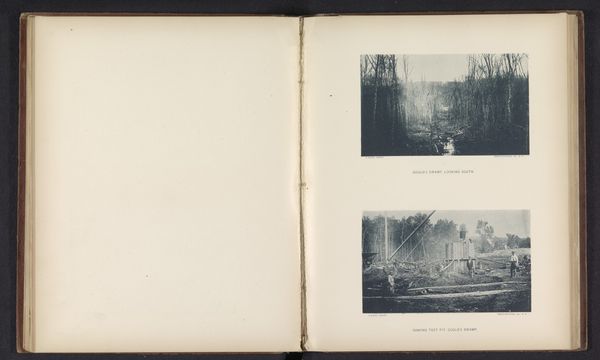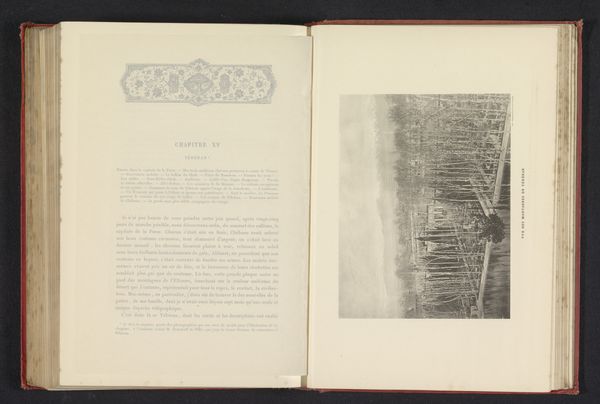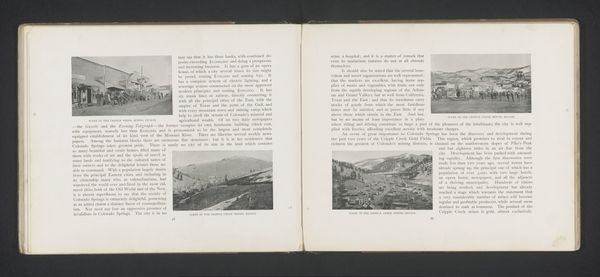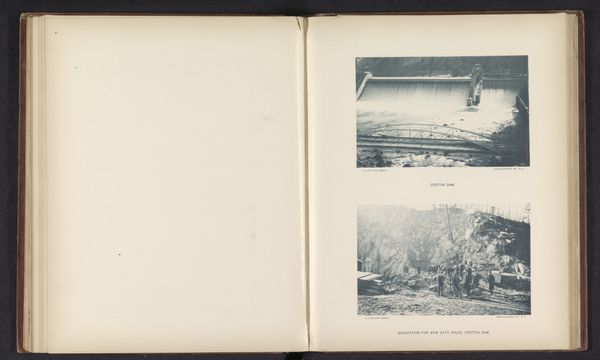![['Headhouse, Shaft No. 29 Tenth Avenue', 'Headhouse, Shaft No. 30'] by C.V.V. Powers](/_next/image?url=https%3A%2F%2Fd2w8kbdekdi1gv.cloudfront.net%2FeyJidWNrZXQiOiAiYXJ0ZXJhLWltYWdlcy1idWNrZXQiLCAia2V5IjogImFydHdvcmtzLzU2MjY2NzhlLTBhOTktNDc3MS04YzUyLTI4OTk3YmU4MDdhMi81NjI2Njc4ZS0wYTk5LTQ3NzEtOGM1Mi0yODk5N2JlODA3YTJfZnVsbC5qcGciLCAiZWRpdHMiOiB7InJlc2l6ZSI6IHsid2lkdGgiOiAxOTIwLCAiaGVpZ2h0IjogMTkyMCwgImZpdCI6ICJpbnNpZGUifX19&w=3840&q=75)
print, photography
# print
#
landscape
#
photography
#
pen and pencil
#
genre-painting
#
watercolor
#
realism
Dimensions: height 345 mm, width 272 mm
Copyright: Rijks Museum: Open Domain
Curator: Looking at this album page, we see two photographic prints dating from before 1887, titled 'Headhouse, Shaft No. 29 Tenth Avenue' and 'Headhouse, Shaft No. 30' attributed to C.V.V. Powers. They depict early industrial structures. Editor: My first impression is of heavy, rudimentary machinery looming over groups of people. The tonality is stark; the structures dominating the workers clustered below give an oppressive feeling, really speaking to themes of labor. Curator: Absolutely, that stark contrast and scale invites reflection on the exploitation inherent in industrial progress. Think about who those workers were, their stories, the racial and class dynamics at play in this era of expansion. These images provide a stark glimpse into that complex reality. Editor: And the materials! Look at the rough-hewn timbers, the exposed machinery – it's all so immediate, so visceral. The artist seems to deliberately show the nuts and bolts, the building blocks. You see the work in progress here, a brutal system visibly under construction, with human labor at its core. Curator: Right. The visual language aligns with realist themes, representing a deliberate counterpoint to romantic notions of progress and prosperity, showing us an unvarnished picture of work, extraction, and community. Editor: And thinking about those structures, these headhouses. They are literally lifting things. What did they lift up and out of sight? This material record points to processes often obscured: mining, transporting, fueling a growing urban environment far removed from the visible evidence. Curator: Exactly. These photographs can spark a discussion about environmental impact, and community disruption; but also the technological advancement in our societal value system then. What kind of a person benefits most of this mining. How it contributes to identity formation when the world demands the fruit of the work of another person or group. Editor: Ultimately, this pair of images compels us to ask not just what was built, but how it was built, who did the building, and at what cost. It's a testament to the power of photography as historical documentation, as material evidence, and as a catalyst for conversations. Curator: I agree. The lens becomes a portal connecting us to these specific moments of transformation, and these photographic records challenge us to think critically about their legacy.
Comments
No comments
Be the first to comment and join the conversation on the ultimate creative platform.
